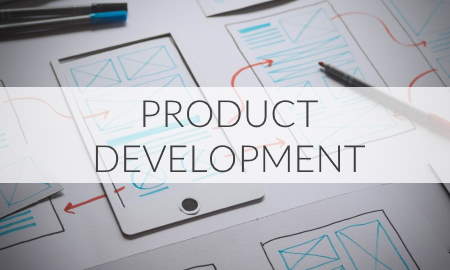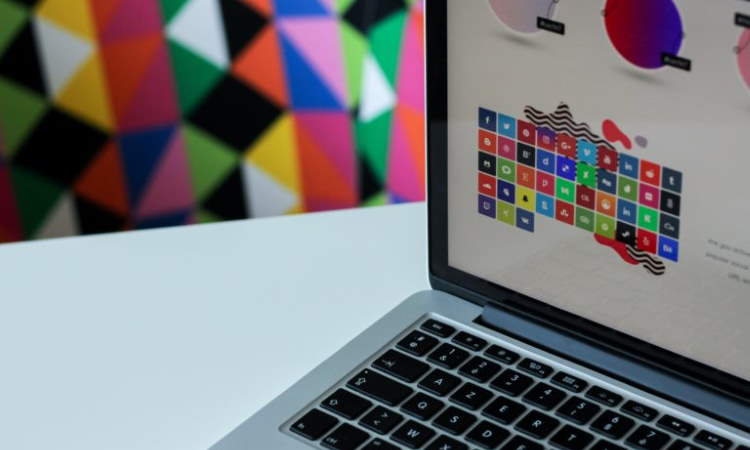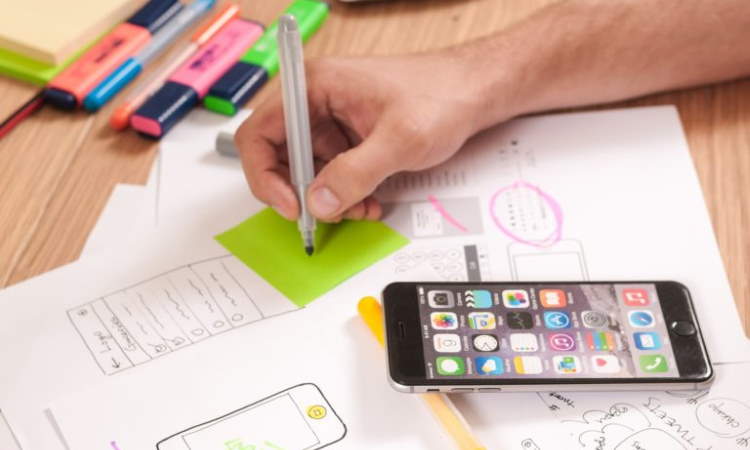

Learn the key elements of a business, and identify the skills and methodology needed to build your dream company.

Learn about the Agile product development process and identify next steps to build your product.

Create a plan and work towards specific goals leveraging our expert guidance and support
Here’s a quick sneak peek into some of the main roles required for each stage.
In the ideation phase, it is essential to have a team that includes a product manager, UX designer, and software engineer. The product manager is responsible for defining the product vision and roadmap. The UX designer handles designing the user interface and user experience. Finally, the software engineer turns the product design into a functional prototype. These three roles work together to ensure the product concept is viable and technically feasible.
As the product moves into the development phase, the team needs to include more roles. These are a quality assurance engineer and a data analyst. The quality assurance engineer ensures that the product is free of bugs and meets the expected quality standards. At the same time, the data analyst provides insights into how users interact with the product.
By assembling a team that includes all these essential roles, companies can ensure that their tech product is developed efficiently, meets the needs of its users, and is successfully launched to the market.
Here is a closer look at the 10 key roles needed to develop a tech product (and two more roles essential for a successful product launch) and what each role entails.
A product owner represents the interests of the business and the user community.
Their main responsibility is to determine the features that come into play with a product release. The product owner must have a very clear understanding of the requirements the product can fulfill. At the same time, they know what kinds of business users would make use of the features.
They act as a liaison between the technical team and the customer base. The product owner also conveys and prioritizes the features or business requirements to a team of developers. This ensures that the team knows what story to work on during any given stage of the product cycle.
A technical product manager, commonly called a PM, has a strong base on technical details. The PM usually heads product management teams in between the business and engineering. They give the team a clear idea about the features at play, and what the user expects from these features.
Their primary responsibility is to identify the features of a product before its release. Then, they must ensure that all is well on the product side of software development. The agile product managers coordinate the UI/UX, prepare user stories for the development team, groom the board, and set deadlines. They give the team a clear idea about the features at play and what the user expects from them.
They work closely with the development and testing engineers. They might have to assign roles and tasks, or act as a subject matter expert whenever the situation demands it. Sometimes they work with third parties for API integration, or evaluate tech framework options. Their collaboration with the marketing and sales can help the team exceed user expectations.

A brand designer and a graphic designer are similar roles that go hand in hand. A brand designer has expertise in the field of branding and copy. They understand the design that can convey your brand's mission to customers.
Their responsibilities revolve around visualizing products to people in the way that the company wants to convey its message. They assess a brand thoroughly, and create an image that allows your brand to resonate with the end-users. It also involves the analysis of the brand and target customers. A graphic designer decides everything from logos to a design palette.
After taking input from the brand designer, they ensure that the product appeals to the customer. Often, a graphic designer also doubles as a brand designer.
An information architect provides users with a positive experience.
They ensure that the Web application and Web sites have a suitable information structure. Next, they identify the requirements and analyze users' needs and preferences. This includes the categorization and consumption of data. Information architects also prepare paper and interactive models.
Information architects coordinate between the web developer and the production team. In the end, they translate the user's behavior into media structures and craft a wholesome interactive experience.
The tech architect plays a critical role in the success of a development project. This role requires extensive knowledge and experience in software design patterns, system architecture, and programming languages. A successful tech architect must have strong problem-solving and communication skills and the ability to think strategically and collaborate with stakeholders across the organization.
A tech architect is a vital member of a development team responsible for designing the technical architecture of a project. They work to understand business requirements and constraints, then develop a technical solution that is efficient, scalable, and robust. The tech architect is also responsible for ensuring that the technical solution aligns with the overall business strategy. They must adapt to changing requirements and technology trends and be willing to keep learning and improving their skills.
They oversee the work of the development team to ensure that the technical design is implemented correctly. They should be able to understand complex technical concepts and explain them in simple terms to non-technical stakeholders. Their expertise and guidance can help ensure that the final product meets the needs of the business and its users.
Another vital role in tech product development is the UX and UI designer. These roles are focused on the user experience and user interface, respectively.

UX designers are responsible for understanding the users and creating a user-centered design that meets their needs. They focus on presenting something to a user, determining the way people interact with it, and how it works. UX designers develop a number of flows that go logically from one point to another.
On the other hand, UI designers focus on the product's visual appeal. They define the look and layout to communicate the UX flow to the end user in an appealing way. Without these tech product development roles, you could end up with a product nobody wants or knows how to use.
They collaborate closely with product managers and engineers to gain user requirements. They also prepare drafts to present to other teams and stakeholders. Part of their job is communicating with the brand designer to ensure color schemes, styles, and fonts are on point and aligned with the brand.
A software developer plays another critical role in creating and advancing your product from a software and program perspective.
They write and test code, ensuring a smooth transition between the technical and design aspects so that it meets the needs of the end user. The software developer is responsible for the quality and efficiency of the code that drives the product.
They help product managers and owners understand the limitations and possibilities of the software.
A software project manager supervises the project from beginning to end, giving technical guidance to the development team. They make sure everyone understands the project's goals, timelines, and progress.
They oversee the product and people, resolve problems, and ensure that realistic deadlines are set and met for product delivery. They ensure that the product is delivered on time, on budget, and to the customer's satisfaction.
The software project manager communicates with the development team, including software developers and UX/UI designers. They ensure that everyone works together toward the same goal and that the project stays on track.
A quality assurance engineer is a must in every product. They perform various types of testing, such as functional testing, usability testing, and performance testing, to ensure that the product is of the highest quality.

Their role involves creating a well-structured plan to test any software or product with test cases. They review the specifications and design documents, provide feedback, and coordinate with the development team. Therefore, they ensure that the team delivers zero-defect products. The QA engineer also develops test cases that cover all possible scenarios and ensures that the product meets the customer's requirements.
They provide feedback to and work closely with the development team to identify and remove bugs and inefficiencies.
The DevOps culture was a dynamic shift in the technological community that raised the bar in terms of communication, collaboration, and the relationship between the development and operations teams. It is a very challenging role that covers coding, scripting, deployment automation, and version control.
They ensure that the product is deployed efficiently and effectively and is easy to maintain. The DevOps engineer is also responsible for ensuring the product is secure and can withstand cyber-attacks. They implement security measures, such as firewalls and encryption, to protect the product and its users. They also monitor the product for any security threats and take appropriate action to prevent them.
Also, they unit test their code. When they push it, DevOps engineers make sure that the product has fewer defects at the testing stage. They are prone to very challenging environments and must be adept at handling change.
The DevOps engineer bridges the gap between development and operations teams. They also ensure that the development team can update the product and resolve any issues quickly.
As the product nears its launch date, it is crucial to have a marketing team to create awareness and generate demand for the product. This team typically includes a product marketer responsible for crafting the product's messaging, developing marketing campaigns, and executing them across various channels.
Once the app has been developed and is ready for release, a marketer's role comes into play.
The marketer's job is to promote the app and generate interest among potential users. This can involve creating a marketing plan, developing promotional materials such as ads and videos, and working with influencers to promote the app on social media. The marketer is also responsible for tracking and analyzing the app's performance metrics and adjusting the marketing plan as needed to maximize the app's visibility and downloads.
Collaborates with other marketing and sales team members to develop and execute marketing strategies. They also communicate with data analysts to identify trends and gain insights. A marketer will also work with the brand designer to ensure the marketing message is aligned with the overall brand identity.
Data analysts need to have strong analytical skills and a solid understanding of statistics and data modeling. They must also be comfortable working with large sets of data and have experience with data processing and manipulation. Effective communication skills are also essential for data analysts.
A data analyst is responsible for collecting, processing, and performing statistical analyses on data. They work with large data sets, turning raw data into meaningful insights that can inform business decisions. Data analysts often work with databases, using SQL to extract data and create reports. They also use statistical software, such as R or Python, to perform data analyses and create visualizations that help to communicate findings.
They need to present their findings to various audiences, including business leaders and stakeholders. Ultimately, the goal of the data analyst is to help businesses make data-driven decisions by providing actionable insights based on data analysis.

The tech industry is constantly evolving, as are the roles required to develop a product. Startups and established companies alike need to have a clear understanding of the roles required for each stage of product development and the skill sets necessary for each role.
Effective communication and collaboration are also essential to ensure everyone is on the same page and working towards the same goal. This includes the development team and stakeholders such as customers, investors, and other departments within the organization.
These roles play a critical part in the development process, from designing the user experience to ensuring the product is scalable and secure. By assembling a well-rounded and integrated team, companies can ensure the end product meets the business requirements and gives them a large number of satisfied customers.
Ready to take your product to the next level? Let us show you how.
We Help Visionary Tech Entrepreneurs Build Impactful Companies!